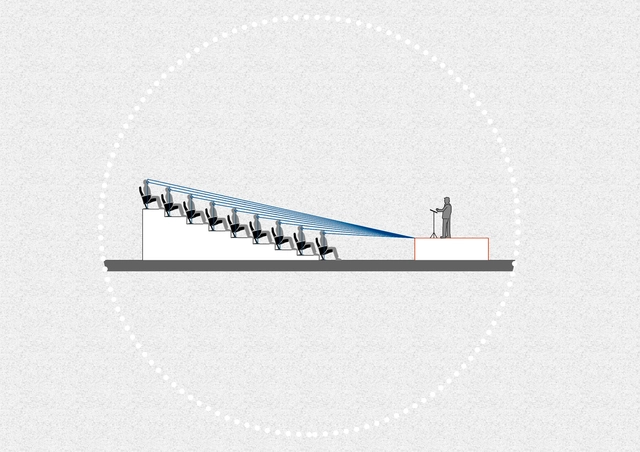BROWSE ALL FROM THIS PHOTOGRAPHER HERE
↓
September 02, 2023
https://www.archdaily.com/1006324/victorian-family-violence-memorial-muir-plus-openwork Hana Abdel
March 08, 2023
https://www.archdaily.com/977057/puffing-billy-lakeside-visitor-centre-terroir Hana Abdel
January 06, 2023
© Peter Bennetts + 15
Area
Area of this architecture project
Area:
1585 m²
Year
Completion year of this architecture project
Year:
2019
Manufacturers
Brands with products used in this architecture project
Manufacturers: GRAPHISOFT Autex Fisher & Paykel Spectrum Lighting Ampelite , +12 Archier , Britton Timbers , Grasscrete , Howgroup , INEX , KLH , Kone , LOCKER GROUP , Nuprotec , Planex , Plazit-Polygal , Sisal -12
https://www.archdaily.com/948439/albert-park-office-and-depot-harrison-and-white-plus-archier Andreas Luco
December 01, 2022
https://www.archdaily.com/993107/courtyard-house-fgr-architects Paula Pintos
November 10, 2022
https://www.archdaily.com/968590/rodda-lane-sibling-architecture Hana Abdel
September 29, 2022
https://www.archdaily.com/989702/aireys-house-studio-nicholas-burns Hana Abdel
September 04, 2022
https://www.archdaily.com/988361/wallaby-hill-house-avver Hana Abdel
August 15, 2022
https://www.archdaily.com/987119/eastham-street-house-muir Hana Abdel
August 06, 2022
© Peter Bennetts + 16
Year
Completion year of this architecture project
Year:
2022
Manufacturers
Brands with products used in this architecture project
Manufacturers: Miele AWS , Abbey , Aeratron , Artedomus , +18 Austral Bricks , Bellevue Architectural , Breezeway Louvres , Byzantine , Caesar Stone , Charred Wood , Creative Windows , Cult , First Choice Warehouse , Franke , Laminex , Lynch’s window fashions , Melbourne Oak Floors , Prestige Carpets , Sirius , Steinel , Tile fusion , Tsar Carpet -18
https://www.archdaily.com/986655/mount-martha-house-kister-architects Hana Abdel
August 02, 2022
© Peter Bennetts + 28
Area
Area of this architecture project
Area:
375 m²
Year
Completion year of this architecture project
Year:
2021
Manufacturers
Brands with products used in this architecture project
Manufacturers: Miele AWL , Anthony Lynch , Artedomus , Bellevue Architectural , +23 Byzantine , Caesar Stone , Creative Windows , Don Currie Carpets , Franke , Fyber Carpet , Godfrey Hirst , ILVE , LWF , Laminex , Lysaght , Mac , Melbourne Oak Floors , Mercury Heating , Mondoluce , Nissl Eichert , ROGER SELLER , Radial Timbers , Sirius , Tiles Fusion , Toucan , Ventech , Woca -23
https://www.archdaily.com/986421/the-bridge-house-kister-architects Hana Abdel
June 20, 2022
https://www.archdaily.com/983771/west-bend-house-mrtn-architects Hana Abdel
June 10, 2022
© Peter Bennetts + 27
Area
Area of this architecture project
Area:
175 m²
Year
Completion year of this architecture project
Year:
2019
Manufacturers
Brands with products used in this architecture project
Manufacturers: &Tradition , Candana , City Scape Steel , Cranbrook Workshop , Design Daily , +7 FLOS , Haarc Group , Marco Steel , Pivotant , Sterland Roofing & Cladding , Wastberg , Winning Appliances -7
https://www.archdaily.com/962983/bismarck-house-andrew-burges-architects Hana Abdel
April 10, 2022
© Peter Bennetts + 13
Year
Completion year of this architecture project
Year:
2020
Manufacturers
Brands with products used in this architecture project
Manufacturers: James Hardie Australia About Space , Adriatic stone , Colorbond , District , +6 Dulux , Great Frames , MK Upholstery , Profile Office Furniture , Tide Design , Warwick Fabrics -6
https://www.archdaily.com/979914/10-fold-house-timmins-plus-whyte-architects Bianca Valentina Roșescu
March 30, 2022
https://www.archdaily.com/979236/sculptform-design-studio-woods-bagot Bianca Valentina Roșescu
January 22, 2022
https://www.archdaily.com/975398/music-market-cultural-center-sibling-architecture Hana Abdel
December 30, 2021
https://www.archdaily.com/974290/uts-thomas-street-building-durbach-block-jaggers Hana Abdel
Subscriber Access | December 23, 2021
© Agustina Iñiguez
When designing an architectural space, it's necessary to think about how to satisfy the needs of each user, looking to achieve an adequate level of comfort and a pleasant experience. Auditoriums, cinemas, and theatres are spaces that involve large masses of people, so special attention must be paid to factors like isoptics, acoustics or accessibility so that when witnessing an event, everyone is able to receive the same information.
https://www.archdaily.com/973743/how-is-the-isoptic-calculated Agustina Iñiguez
October 14, 2021
© Peter Bennetts + 12
Area
Area of this architecture project
Area:
18350 m²
Year
Completion year of this architecture project
Year:
2020
Manufacturers
Brands with products used in this architecture project
Manufacturers: Autex Interface Axona Aichi , Ihreborn , JSB , +15 Jardan , Knauf , Kvadrat , Laminex , Light project , Lotus , LuxFX , Maharam , Swiss Design , Tacchini , Thinking Works , This Weber , VMZINC , Versalux , Walter Knoll -15
https://www.archdaily.com/970016/deakin-law-school-building-woods-bagot Hana Abdel
















